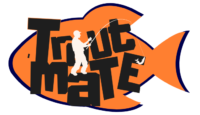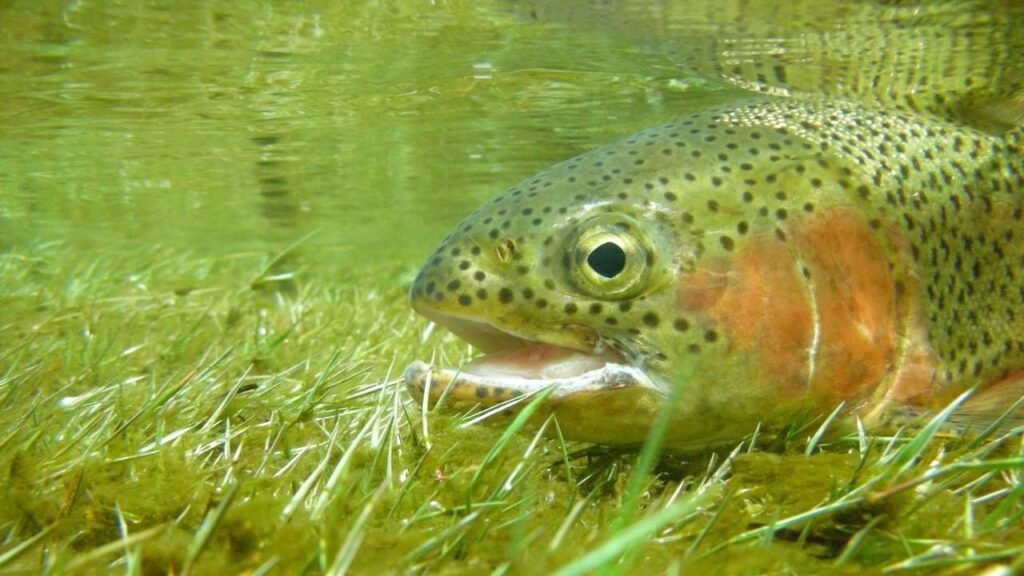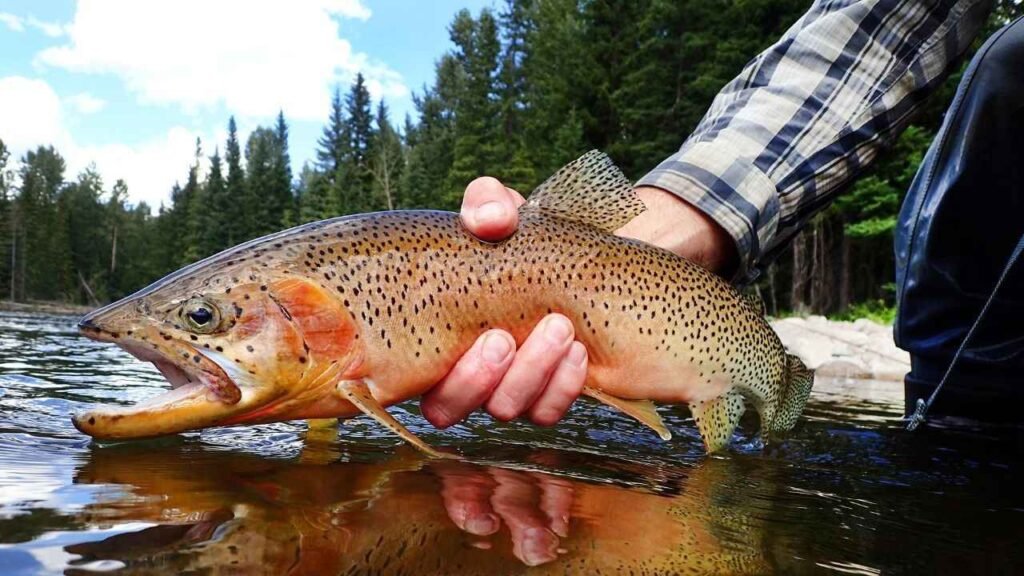To start trout fishing as a beginner, use lightweight gear and select natural baits like worms or artificial lures. Focus on shallow, clear waters where trout are often found.
Trout fishing offers a rewarding experience for beginners eager to connect with nature. Lightweight gear, such as a spinning rod and reel, helps manage smaller fish typical of trout streams and lakes. Natural baits like worms or artificial lures mimic trout’s natural diet, increasing your chances of success.
Shallow, clear waters provide an ideal environment as trout prefer these conditions. Observing water movement and fish behavior can further enhance your fishing skills. With patience and practice, trout fishing can become an enjoyable and fruitful hobby, offering both relaxation and excitement for novice anglers.
Getting Started
Trout fishing can be a rewarding outdoor activity. For beginners, understanding the basics is crucial. This section will guide you through the essentials, ensuring you have a successful start.
Choosing The Right Gear
Having the right gear is important for trout fishing. Here are some key items:
-
Fishing Rod: A lightweight spinning rod is ideal for beginners.
-
Reel: Choose a reel that matches your rod’s weight and size.
-
Fishing Line: Use a 4-6 pound test line for better results.
-
Hooks: Size 10-14 hooks are perfect for trout.
-
Bait: Worms, minnows, or artificial lures work well.
Here’s a quick reference table:
|
Item |
Recommendation |
|---|---|
|
Fishing Rod |
Lightweight Spinning Rod |
|
Reel |
Matches Rod’s Weight and Size |
|
Fishing Line |
4-6 Pound Test Line |
|
Hooks |
Size 10-14 |
|
Bait |
Worms, Minnows, Artificial Lures |
Understanding Trout Behavior
Knowing how trout behave helps in catching them. Trout prefer cold, clear water. They often stay near rocks and logs. Early morning and late evening are the best times to fish. Trout have excellent eyesight, so staying quiet is key.
Keep these points in mind:
-
Water Temperature: Trout thrive in 50-60°F water.
-
Habitat: Look for trout near rocks, logs, and underwater plants.
-
Feeding Times: Early mornings and late evenings are peak feeding times.
-
Stealth: Move quietly to avoid scaring the fish.
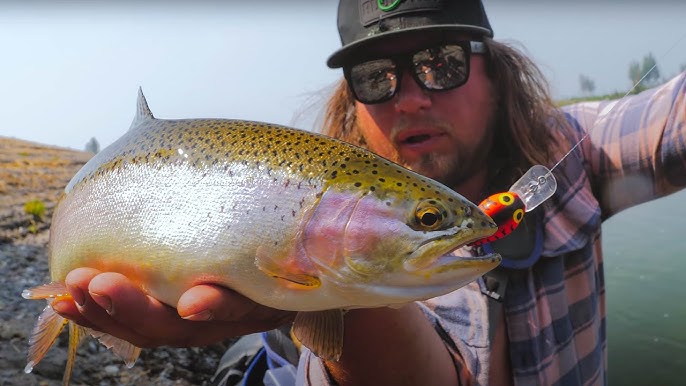
Credit: m.youtube.com
Finding The Perfect Spot
Choosing the right spot is crucial for successful trout fishing. Trout thrive in specific environments, so finding their favorite spots can make all the difference. This guide will help you identify the best locations for trout fishing, whether you prefer rivers, streams, lakes, or ponds.
Rivers And Streams
Trout love cold, clear rivers and streams. These environments provide the perfect conditions for trout. Look for areas with flowing water and ample oxygen. Trout often hide in shaded spots during the day.
-
Riffles: Shallow, fast-moving sections with rocky bottoms. Trout feed here due to abundant insects.
-
Pools: Deeper sections with slower-moving water. Trout rest and hide in pools, especially under overhanging vegetation.
-
Eddies: Areas where water circles back. Eddies trap food, making them prime spots for trout.
Use a topographic map to identify these features. Local fishing guides can also provide valuable insights.
Lakes And Ponds
Trout also thrive in lakes and ponds. These larger bodies of water offer different challenges and opportunities. Focus on finding cooler parts of the lake.
-
Drop-offs: Areas where the lake bed suddenly becomes deeper. Trout often hang out near these drop-offs.
-
Inlets and Outlets: Spots where water flows into or out of the lake. These areas bring fresh, oxygenated water and food.
-
Weed Beds: Underwater plants that attract insects. Trout feed around these areas.
Using a fish finder can help locate these key areas. Local anglers often have tips on where trout are most active.
|
Location |
Features |
Tips |
|---|---|---|
|
Rivers and Streams |
Riffles, Pools, Eddies |
Check topographic maps, ask local guides |
|
Lakes and Ponds |
Drop-offs, Inlets/Outlets, Weed Beds |
Use fish finders, consult local anglers |
Essential Techniques
Learning to trout fish is a fun adventure. Knowing the right techniques helps catch more trout. Two important techniques are casting basics and reading the water.
Casting Basics
Casting is how you get your bait or lure in the water. Follow these steps for a good cast:
-
Hold the rod with a firm grip.
-
Pull back the rod to the 2 o’clock position.
-
Flick the rod forward to the 10 o’clock position.
-
Release the line smoothly.
Practice these steps to improve your casting accuracy. A good cast can make a big difference.
Reading The Water
Reading the water helps you find where trout are hiding. Look for these signs:
-
Current breaks: Trout like areas where fast water meets slow water.
-
Rocks and logs: These provide hiding spots for trout.
-
Depth changes: Trout often stay in deeper pools.
Use these signs to choose the best spots to cast your line.
Bait And Lures
Choosing the right bait and lures is key to successful trout fishing. Natural baits and artificial lures each have unique benefits. Knowing when and how to use them will increase your chances of catching trout.
Natural Baits
Natural baits come directly from the trout’s natural environment. These baits are effective because they mimic what trout usually eat.
-
Worms: Earthworms and nightcrawlers are great choices.
-
Insects: Crickets and grasshoppers work well.
-
Fish Eggs: Salmon eggs attract trout effectively.
|
Natural Bait |
Best For |
|---|---|
|
Worms |
All trout species |
|
Insects |
Stream and river trout |
|
Fish Eggs |
Lake trout |
Artificial Lures
Artificial lures are designed to mimic the appearance and movement of natural prey. They are versatile and reusable.
-
Spinners: Great for attracting trout with their flashing blades.
-
Spoons: Their wobbling action draws trout in.
-
Jigs: Effective for deeper water fishing.
Choose lures based on water conditions and trout behavior. Experiment with different types to see what works best.
Knot Tying
Learning knot tying is essential for any trout fishing beginner. Knots secure your hook, lure, and line. Strong knots ensure you do not lose fish. Here are some basic and advanced knots to get you started.
Basic Knots
Basic knots are simple but effective. They are crucial for beginners.
-
Improved Clinch Knot: Great for securing hooks. Simple and strong.
-
Palomar Knot: Easy to tie. Works well with braided lines.
-
Surgeon’s Knot: Ideal for joining two lines. Quick and reliable.
|
Knot |
Use |
Strength |
|---|---|---|
|
Improved Clinch Knot |
Securing hooks |
High |
|
Palomar Knot |
Braided lines |
Very High |
|
Surgeon’s Knot |
Joining lines |
Moderate |
Advanced Knots
Advanced knots offer more strength and versatility. They are for more experienced anglers.
-
Blood Knot: Excellent for joining two lines. Strong and smooth.
-
Albright Knot: Great for connecting lines of different diameters. Durable.
-
Double Uni Knot: Versatile for tying lines and leaders. Very secure.
Practice these knots at home. Use a thick string to start. Over time, you will tie them quickly and confidently.
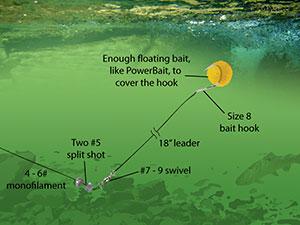
Credit: myodfw.com
Fishing Etiquette
Fishing is fun, but being respectful is important. Knowing proper fishing etiquette helps everyone enjoy the experience. Let’s explore some key points to keep in mind.
Respecting Nature
Nature is our friend. Keep the environment clean and undisturbed. Here are some tips:
-
Pick up your trash: Always leave the spot cleaner than you found it.
-
Use biodegradable bait: This reduces harm to aquatic life.
-
Respect wildlife: Do not disturb animals and plants around you.
-
Stay on paths: Stick to marked trails to protect fragile ecosystems.
Interacting With Other Anglers
Being courteous to fellow fishers is key. Here’s how to do it:
-
Keep distance: Give other anglers space. Avoid crowding their spot.
-
Be quiet: Loud noises can scare fish away.
-
Share tips: Help beginners if they ask for advice.
-
Respect lines: Do not cast your line over someone else’s.
Safety Tips
Trout fishing can be an exciting adventure. But safety should always come first. Whether you’re fishing in a river or lake, following these safety tips can help ensure a fun and safe experience.
Personal Safety
Your personal safety is the top priority. Here are some essential tips:
-
Wear a life jacket: Always wear a life jacket, especially if you can’t swim well.
-
Use sunscreen: Protect your skin with a high-SPF sunscreen. Reapply it every few hours.
-
Stay hydrated: Drink plenty of water. Dehydration can make you dizzy or tired.
-
Wear appropriate clothing: Dress in layers. Weather can change quickly.
Environmental Awareness
Being aware of your environment is crucial. It helps you stay safe and protect nature.
-
Watch for wildlife: Animals can be unpredictable. Keep a safe distance.
-
Be mindful of weather: Check the weather forecast before heading out. Avoid fishing during storms.
-
Respect the water: Rivers and lakes can have strong currents. Stay in shallow areas if unsure.
-
Leave no trace: Clean up after yourself. Protect the environment for future generations.
Following these safety tips can ensure a fun and safe trout fishing experience. Happy fishing!
Credit: www.reddit.com
Post-fishing Care
Taking care of your catch and gear after fishing is crucial. Proper post-fishing care ensures fresh fish and durable equipment. Let’s explore some essential tips.
Cleaning Your Catch
Cleaning your trout properly is vital for taste and safety. Follow these steps:
-
Rinse the trout in cold water to remove slime and dirt.
-
Place the trout on a clean cutting board.
-
Using a sharp knife, cut the anus to the gills.
-
Remove the internal organs carefully.
-
Rinse the inside thoroughly with cold water.
-
Pat the fish dry with paper towels.
To keep your trout fresh, store it in a cooler with ice. Avoid direct sunlight to maintain the quality of the fish.
You can learn how to clean your catch from here
Storing Your Gear
Proper gear storage extends its life. Follow these tips:
-
Rinse rods and reels with fresh water to remove dirt and salt.
-
Dry all parts thoroughly to prevent rust and corrosion.
-
Store rods vertically in a rod rack to avoid bending.
-
Check the line for frays and replace if needed.
-
Organize tackle boxes, removing any wet or dirty items.
Use a gear bag to keep everything organized and ready for your next trip.
Trout fishing for beginners can be enjoyable and rewarding with the right tips. Start with basic gear, learn effective techniques, and choose ideal fishing spots. Practice patience and persistence. Soon, you’ll experience the thrill of reeling in your first trout.
Happy fishing, and may your adventures be plentiful and successful.
FAQs:
What Is The Best Bait To Catch Trout?
The best bait to catch trout includes live worms, minnows, and artificial lures like spinners and spoons. Fly fishing with nymphs or dry flies is also effective. Choose bait based on local trout preferences and water conditions.
What Is The Trick To Catching Trout?
Use the right bait like worms or insects. Fish during early morning or late evening. Cast near structures. Keep movements minimal. Stay patient.
How To Catch Your First Trout?
Choose a lightweight rod and reel. Use live bait or artificial lures. Cast near cover like rocks or logs. Reel slowly, with occasional pauses. Be patient and observant.
Is Trout Easy To Catch?
Catching trout can be easy for experienced anglers. Beginners might find it challenging due to trout’s elusive nature. Use proper techniques and bait for better success.
